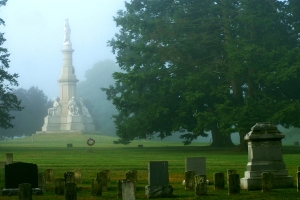Soldier’s Heart by Gary Paulsen
Children’s Book Review from a Christian Mom: Soldier’s Heart by Gary Paulsen Lexile Level 1000
 I read a lot of books I never review on this blog because I want to be able to recommend good reads. These last two, Fire Pony and A Soldiers Heart, fell somewhere between OK and never mind. There is a strange element to each that was disturbing in a distracting way. It made me wonder what the author was intending.
I read a lot of books I never review on this blog because I want to be able to recommend good reads. These last two, Fire Pony and A Soldiers Heart, fell somewhere between OK and never mind. There is a strange element to each that was disturbing in a distracting way. It made me wonder what the author was intending.
Most reviews of Soldier’s Heart describe it as historical fiction or a Civil War narrative, but I think it’s more accurate to describe it as being about Post Traumatic Stress Disorder. If the author’s intent is to say “war is bad,” then it does the job. The term ‘soldiers heart’ might bring to mind noble attributes to be emulated, but it was a term used in the Civil War era for what is now called PTSD.
Charley Goddard is a fifteen year old in 1831 who lies about his age to join the Minnesota Volunteers and fight in the only “shooting war” Charley thinks he’ll see in his lifetime. As with many young men, his vision of war is adventure and camaraderie, but he soon realizes it’s much more about violence, death, wasted lives, and senseless killing.
The book accurately reflects the fighting style of the Civil War, where men are expected to calmly obey orders and walk into gunfire line by line. Charley makes it through the most brutal of battles complete with entire companies marching to their deaths. He grows increasingly violent in response to being immersed in death and gore. Soldier’s Heart quickly becomes less about the historicity of any specific war and more about losing self in the face of such tragedy.
The book is graphic in its violence. In one battle scene the soldiers have been ordered to leave wounded comrades on the battle field. Charley helps a badly wounded friend load and position his rifle, anticipating he will shoot himself. Charley hears the shot as he walks away. In another scene, Charley fills his canteen from a creek, takes a drink, and only then notices the stream is running red with the blood of dead soldiers lying upstream.
After months in these conditions, and surviving many equally violent battles, Charley becomes a different person, fighting with a blind rage and wanting only to kill the enemy.
“Charley parried with his own rifle and took the Rebel soldier just below the breast bone with his bayonet. The man had been running so hard he ran himself onto the bayonet before falling off to the side, dying as he fell, his lungs and heart torn. Charley’s bayonet was stuck and he had to put his food on the man’s chest to jerk it loose…. He attacked anything and everything that came into his range- slashing, clubbing, hammering, jabbing, cutting – and always screaming, screaming in fear, in anger and finally in a kind of rabid, insane joy, the joy of battle, the joy of winning, the joy of killing to live.” pg 84
We’ve read a lot of World War I and World War II stories and a fair amount of Civil War material, so it’s not that I shy away from these topics on a whole, but Soldier’s Heart is especially graphic in its descriptions for the young adult label.
As I said before, this book is more about PTSD than giving a historical perspective to the Civil War. If the intent is to discuss the brutality of war, the unprecedented violence of the Civil War, and the resulting mental impact on soldiers, then it does the job, but it is not historical fiction in the usual sense.
I know there are a lot of Gary Paulsen fans out there, and while we liked some aspects of Hatchet and Lawn Boy, Soldiers Heart won’t be on our favorites list.
Flags:
I think I’ve covered the graphic nature of the content. I recommend parents read the book before deciding if it is appropriate for their children.
Photo taken by Bill Dowling, courtesy of the National Park Service

